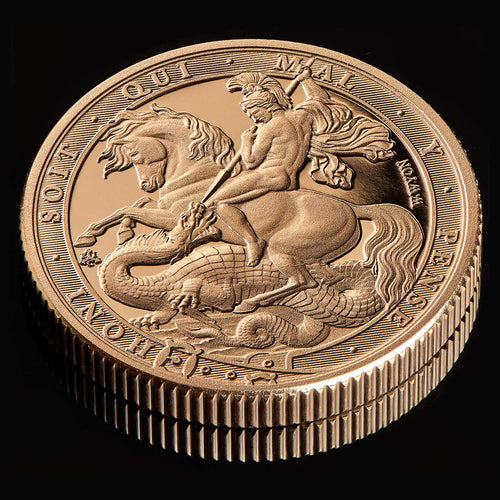
Introducing the MOST LIMITED SOVEREIGN in the world
The 2025 Piedfort Sovereign Gold Proof Coin
Only 100 coins worldwide
- The rarest modern Sovereign in the world with ONLY 100 COINS ISSUED EVERY YEAR
- A prestigious ‘Piedfort’ specification reserved only for the most precious coins
- Featuring William Wyon’s St George & the Dragon masterpiece design
Piedfort Coins – The Most Prestigious Coin Specification
Piedfort coins are some of the most collectable coins in existence. With a history dating back to the 12th century, these coins served an important purpose in the history of numismatics. Piedfort coins were historically given by monarchs as gifts or ‘prestige pieces’ to members of their court.
Typically the same diameter as the more standard ‘circulating’ versions of the same denomination, they were usually twice the thickness and weight so they would not get confused with legal tender and making them a impressive and collectable souvenir for the lucky few.


In England Piedforts were typically minted at various locations around the country and used by original engravers to send new designs in the form of ‘master samples’ or ‘patterns’ to smaller regional mints so that they could be replicated in a standard weight and thickness. The very last Piedfort made for this reason in the UK was the 1588 sixpence.
Overtime these unusual ‘thick’ coins became prestige pieces, closely associated with the Monarchy and given as gifts to members of the court or bought as souvenirs by the wealthy with rulers across Europe using them to display their wealth and power.
A very special specification, Piedfort’s coins are today issued in very low limited edition, with many capturing historic designs and events to display on the specification in honour of its prestigious heritage.
Today at The East India Company the issuing of Piedfort coins is extremely rare and reserved for the most significant occasions.
The meaning of ‘Piedfort’
Coming from the combination of the French words ‘pied’ (foot) and ‘fort’ (heavy) the literal interpretation of piedfort means ‘heavy foot’, with a colloquial meaning of ‘heavy weight’.
In numismatics, Piedfort is commonly know as a coin, typically of gold or silver which is struck using a blank which is usually double the weight and thickness of its normal specification.






 Ceylon / Sri Lanka
Ceylon / Sri Lanka Assam, India
Assam, India Japan
Japan Taiwan
Taiwan Nepal
Nepal China
China Kenya
Kenya Egypt
Egypt South Africa
South Africa




